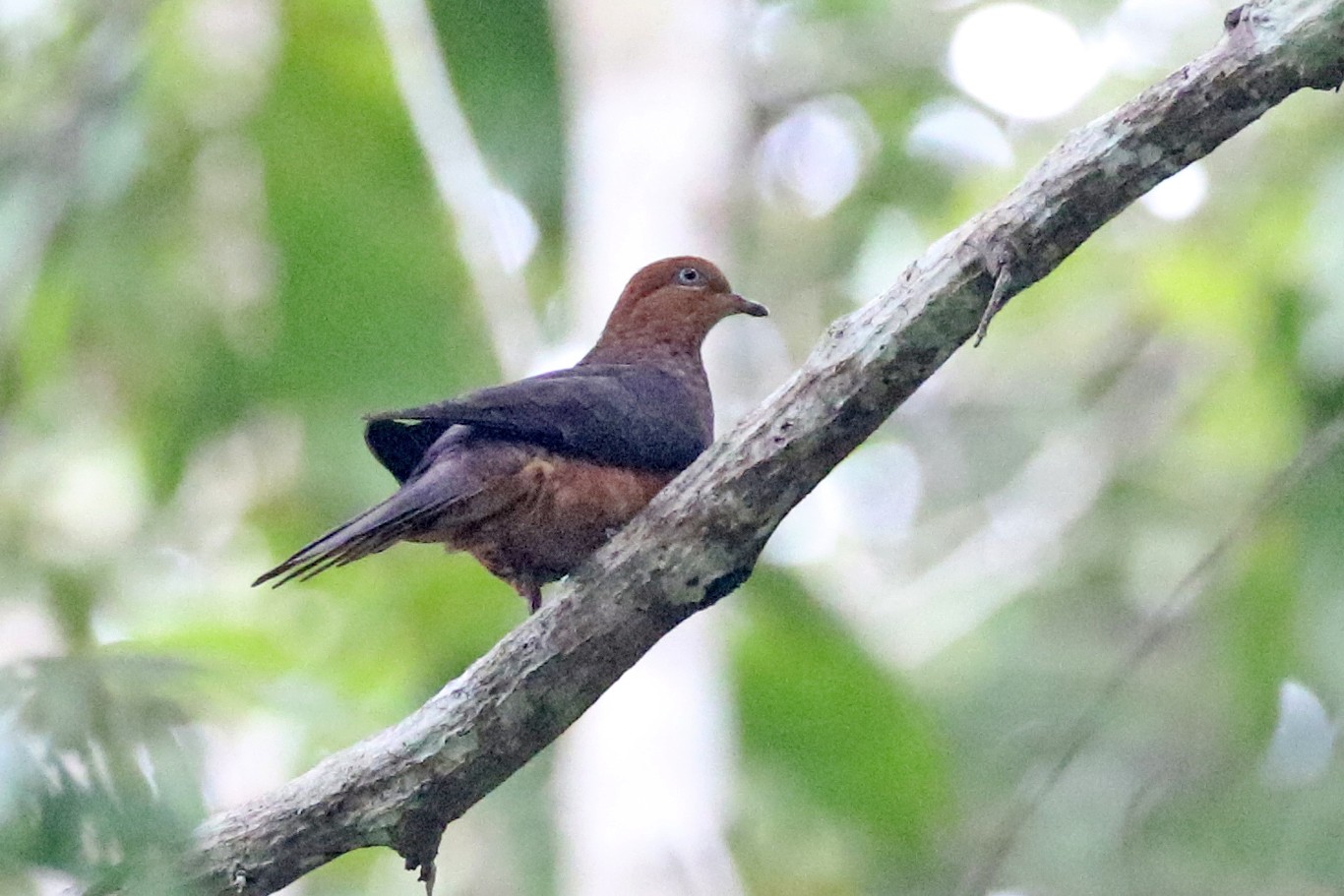Little Cuckoo-dove
A species of Macropygia cuckoo-doves Scientific name : Macropygia ruficeps Genus : Macropygia cuckoo-doves
Little Cuckoo-dove, A species of Macropygia cuckoo-doves
Botanical name: Macropygia ruficeps
Genus: Macropygia cuckoo-doves
Content
Description General Info
 Photo By Charley Hesse TROPICAL BIRDING
Photo By Charley Hesse TROPICAL BIRDING Description
The little cuckoo-dove is a reddish brown pigeon, measuring 27 to 30 cm (11 to 12 in) in length, and weighing 74 to 88 g (2.6 to 3.1 oz). It has cinnamon buff plumage. It has greyish white irides. The beak is brown, and has a black tip. The feet are coral red in colour. The tail is long, and it differentiates the little cuckoo-dove from other sympatric (species existing in the same geographic area and thus frequently encountering one another) pigeons. 
Size
30 cm
Nest Placement
Tree
Feeding Habits
Little Cuckoo-dove consumes berries, seeds, rice, and chillies. It forages in the middle storey or lower canopy and on the ground, occasionally invading rice fields in flocks. It also ingests grit and drinks from puddles.
Habitat
The little Cuckoo-dove typically inhabits lower montane and hill forests, as well as light woodland and areas of lightly wooded cultivation. This species shows a preference for forest edges and is adaptable enough to be found in various mountainous regions. It is known to live solitarily or in pairs, although it can sometimes be found in larger groups.
Dite type
Frugivorous
General Info
Feeding Habits
Bird food type

Fruit
Distribution Area
The little cuckoo-dove is found in evergreen hill forests and forest peripheries, in the north of its range. Southwards, it is found in drier forests and in adjacent areas of second-growth forests. It is also found in cultivated areas. It is commonly found in submontane habitats at elevations of 300 to 2,000 m (980 to 6,560 ft) above sea level. It has also been recorded at heights of at least 3,000 metres (9,800 ft) from sea level on Mount Kinabulu, and sometimes at sea level. 
Species Status
Since 1998, the little cuckoo-dove has been rated as a species of least concern on the IUCN Red List of Endangered Species. This is because it has a large range—more than 20,000 km (7,700 mi)—and because it has a stable population trend. Also, although its population numbers have not been determined, they are thought to be above 10,000, which is above the criterion to warrant a vulnerable rating. It is described to be common in the southern part of its range, and uncommon in the northern part of its range. It is thought to have no major threats. 

 Photo By Charley Hesse TROPICAL BIRDING
Photo By Charley Hesse TROPICAL BIRDING Scientific Classification
Phylum
Chordates Class
Birds Order
Pigeons and doves Family
Dove Genus
Macropygia cuckoo-doves Species
Little Cuckoo-dove